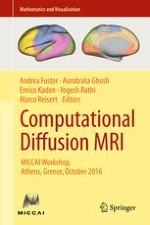This volume offers a valuable starting point for anyone interested in learning computational diffusion MRI and mathematical methods for brain connectivity, while also sharing new perspectives and insights on the latest research challenges for those currently working in the field.
Over the last decade, interest in diffusion MRI has virtually exploded. The technique provides unique insights into the microstructure of living tissue and enables in-vivo connectivity mapping of the brain. Computational techniques are key to the continued success and development of diffusion MRI and to its widespread transfer into the clinic, while new processing methods are essential to addressing issues at each stage of the diffusion MRI pipeline: acquisition, reconstruction, modeling and model fitting, image processing, fiber tracking, connectivity mapping, visualization, group studies and inference.
These papers from the 2016 MICCAI Workshop “Computational Diffusion MRI” – which was intended to provide a snapshot of the latest developments within the highly active and growing field of diffusion MR – cover a wide range of topics, from fundamental theoretical work on mathematical modeling, to the development and evaluation of robust algorithms and applications in neuroscientific studies and clinical practice. The contributions include rigorous mathematical derivations, a wealth of rich, full-color visualizations, and biologically or clinically relevant results. As such, they will be of interest to researchers and practitioners in the fields of computer science, MR physics, and applied mathematics.
